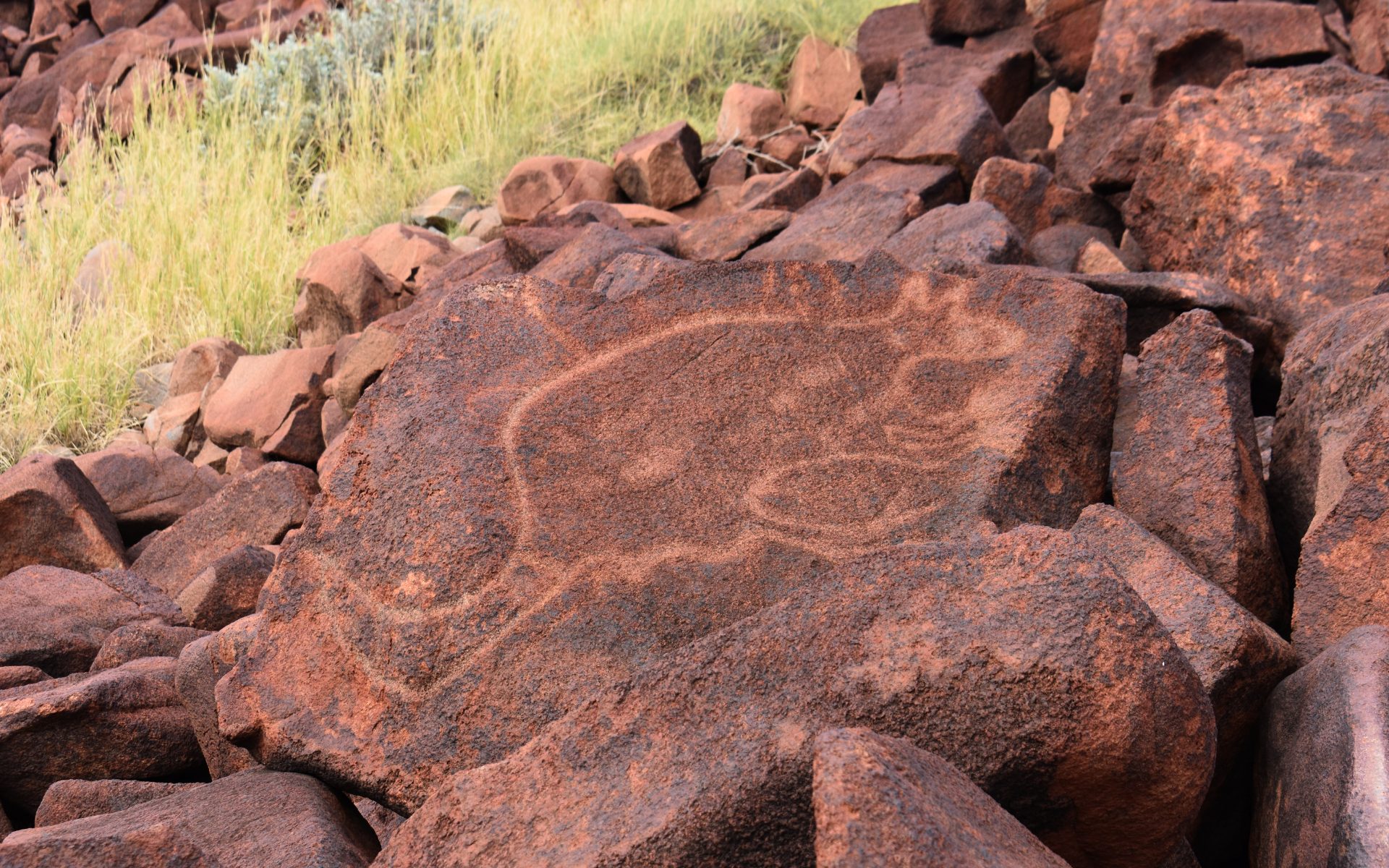Murujuga National Park in north western Australia is home to the highest concentration of ancient rock art in the world. But despite its significance to First Nations communities, the sacred site is in a battle for its own protection. Writer Frankie Adkins visits to find out why.
Over one million petroglyphs are scattered throughout the park, with faded outlines of kangaroos, emus, whales, human figures and spirits, etched into the weathered rock. These form a living record—like the Library of Alexandria, according to Walker—of the ancestral stories of his people.
“In our opinion, [Murujuga] is the most sacred place in Australia as it’s where songlines begin. Every Aboriginal culture from here to Uluru can trace their culture back to this place,” he tells me.
For Indigenous cultures in Australia, songlines are corridors or pathways of complex spiritual knowledge. From Arnhem Land in the top end to the Daintree Rainforest in Queensland, various mobs have embarked on pilgrimages from across the country to Murujuga.
“As Ngarluma/Yindjibarndi people, we had the greatest responsibility of all the tribes, as we carried stories belonging to everyone. If we looked after our country, we looked after everybody’s knowledge,” says Walker, as he drives us over a bumpy off-road track.
Walker started Ngurrangga Tours over a decade ago to highlight the significance of Murujuga and to educate people about Pilbara Aboriginal culture and country. Despite efforts to preserve both country and culture, the sacred site still lies at the epicenter of a fierce battle.
In May this year, a draft decision to grant the park UNESCO World Heritage status—and therefore secure the petroglyphs with special protection—was as good as rejected. The UN committee referred the proposal back to the Australian government, on the grounds that industrial pollution threatened the rock art. It’s been referred back so that the government could “prevent any further industrial development adjacent to, and within, the Murujuga Cultural Landscape.”
Evidence for this pollution is hotly contested. Recent research from the University of Western Australia shows that acidic emissions remove a vital layer of varnish, degrading the rock art. However, the West Australian government released an 800-page monitoring report, which suggests industry and the ancient petroglyphs can safely co-exist.
Murujuga is in the belly of mammoth oil and gas projects, particularly from global energy giant Woodside. When admiring engravings that are 50,000 years old—art that has outlived the Great Pyramids, the Roman Empire, and even the Ice Age—it’s hard to ignore the markers of modern industry chugging away on the horizon.
Behind the rock faces, skeletal cranes poke into the skyline and plumes of smoke wheeze from oil and gas plants. We are also never far from sepia trains of iron ore which weave through the country, not in a flash but an endless snake. Each cart carries around 50 tonnes worth millions of dollars, according to Walker.
Heavy industry is one of the reasons Karratha, a small coastal city in the Pilbara, isn’t established on the tourism map—even though the region has incredible cultural significance and natural beauty. The Pilbara includes the Dampier Archipelago, a group of 42 islands and islets, whose glittering waters are visited by pods of dolphins and breaching whales. Recent seabed investigations have revealed underwater archaeological sites, including stone artefacts and rock art submerged off the Pilbara’s coastline.
An hour from Murujuga, we visit Millstream Chichester National Park, where Walker shows us deep gorges and cavernous swimming holes. He points out the feathery Australian native lilac flower, called Mulla Mulla, and the red desert pea, bush tomato and samphire, an edible saltwater plant.
Without Walker, we would never know the many ways Indigenous Australians connect with and honour this land, from braiding grass shoots to digging into the earth with his hands, to create a soak that filters and purifies water.
Around mid-morning, a storm brews and Walker beelines to the beach so we can watch the thick gray cloud hang low on the horizon. Walker is a storm chaser, and he explains that freshwater rain spills from the Rainbow Serpent, a powerful deity in Creation story, while rain coming from the coast is from the Sea Serpent. When the two serpents collide, they form a cyclone.
Even in May, as winter dawns, sweat trickles down our backs and the air hangs close. The storm is a welcome reprieve, and as soon it breaks, we get a burst of warm rain. Beyond the beach, the battle over protecting the rock art wages on, but the country’s rhythms that have guided the stories of its oldest culture roll on, undisputed.

